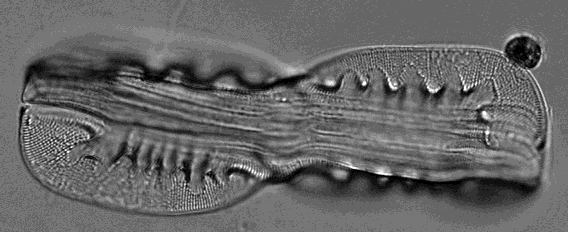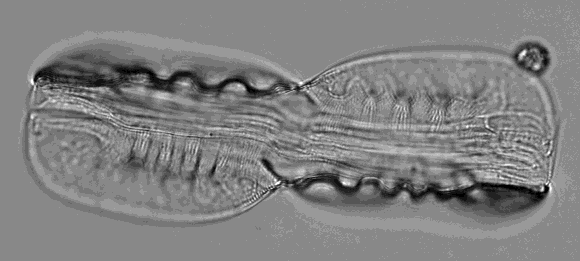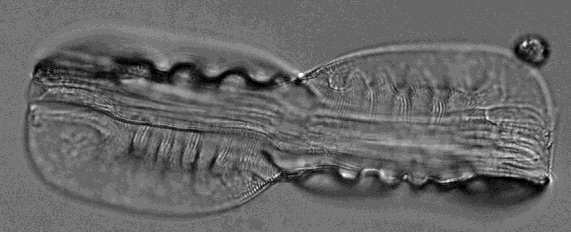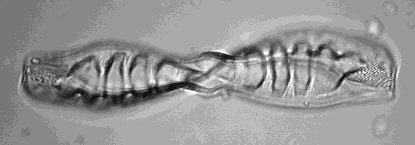(J. W. Bail.) Reim. comb. nov., var. ornata (Patrick and Reimer 1975).

This image was taken utilizing DIC for the specimen above.

This is another image taken with slightly different focus. It was taken under brightfield illumination. In micrometers, length is 97, width is 30, and it has 18 to 20 striae in 10 micrometers.

This image was taken utilizing DIC. It is for the specimen directly above.

This is another image taken with slightly different focus. It was taken under brightfield illumination.

This image was taken utilizing DIC. It is for the specimen directly above.
This taxon has a narrow valve that is linear and has capitate or pointed ends depending on which view you are looking at. There are indistincte striae that are closely punctate. In girdle view it has bilobate wings with thickened silicious dots as if distinctly punctate (Patrick and Reimer 1975).
Type Locality
New England States, Middle Atlantic States, Southeastern States, Florida, East Central States, West Central States, Lakes States, Plains States; Colorado, Montana, Washington (Patrick and Reimer 1975).
Synonyms
Amphiprora ornata J. W. Bail., Smithsonian Contr. Knowl., 2(8):38, pl. 2, figs 15, 23. 1851 (Patrick and Reimer 1975).
Ecology
This taxon is acidophilous to alkaliphilous. It tolerates small amounts of salt. It prefers pH of 7.5 and it occurs in both clean water and polluted habitats (Lowe 1974;Patrick and Reimer 1975;Beaver 1981 ).
Length is 50 to 115 micrometers (Patrick and Reimer 1966).
Width is 28 to 42 micrometers in girdle view (Patrick and Reimer 1966).
Striae and rows of silicious dots in valve view are about 18 to 24 in 10 micrometers (Patrick and Reimer 1966).





